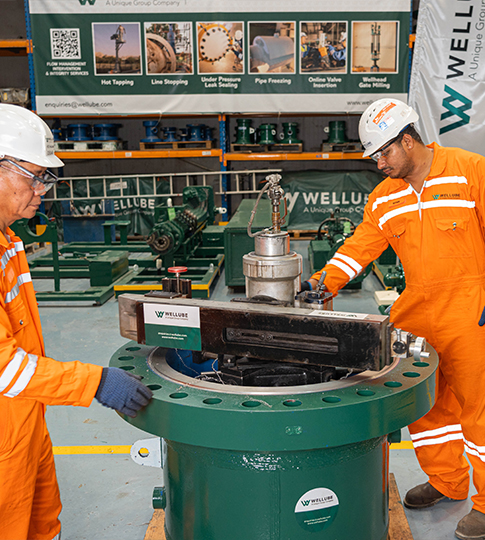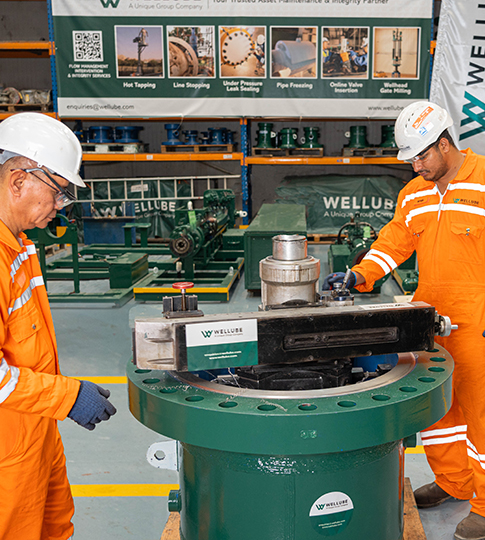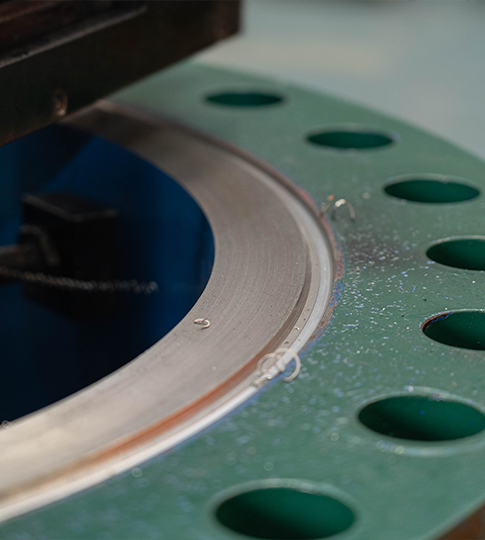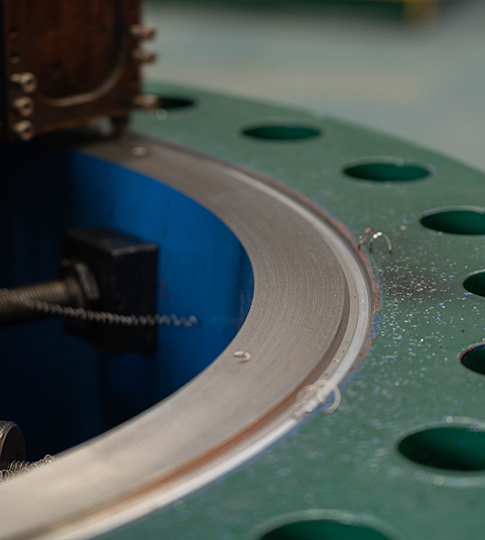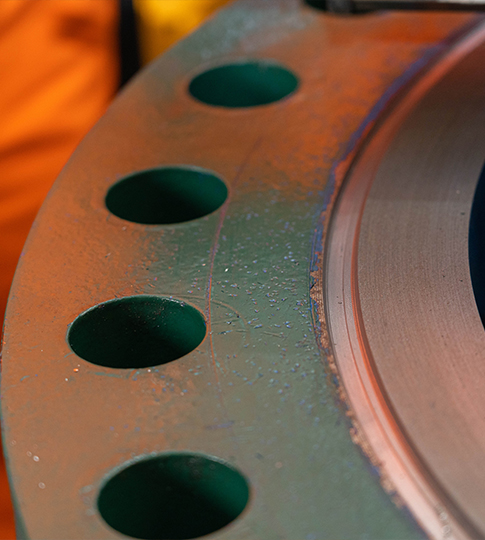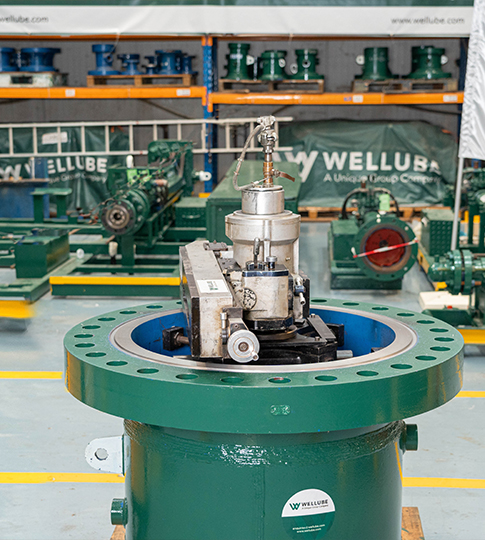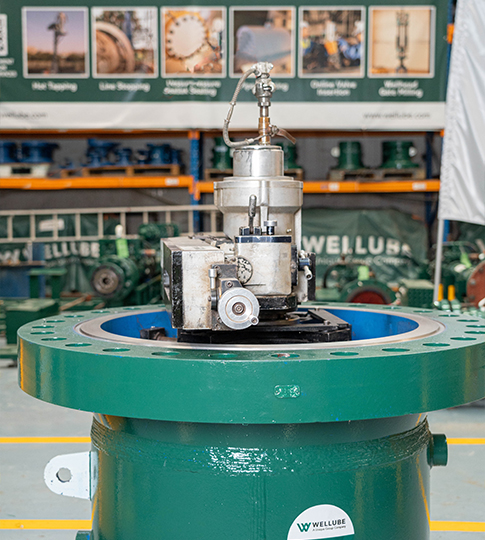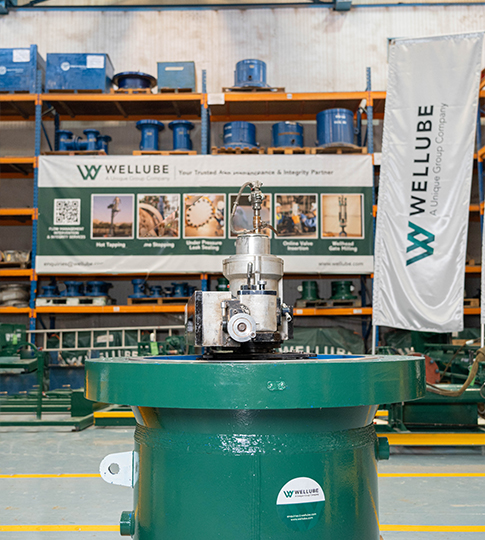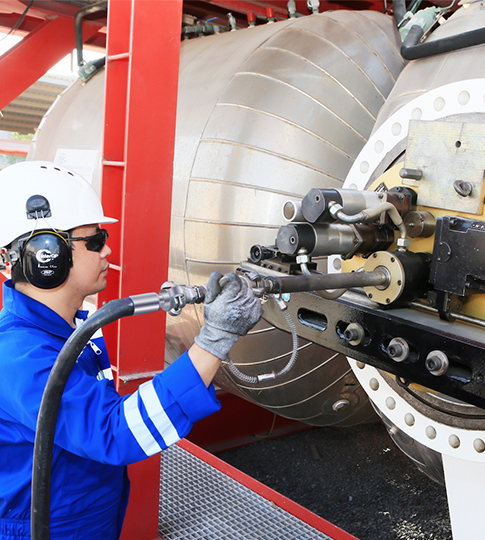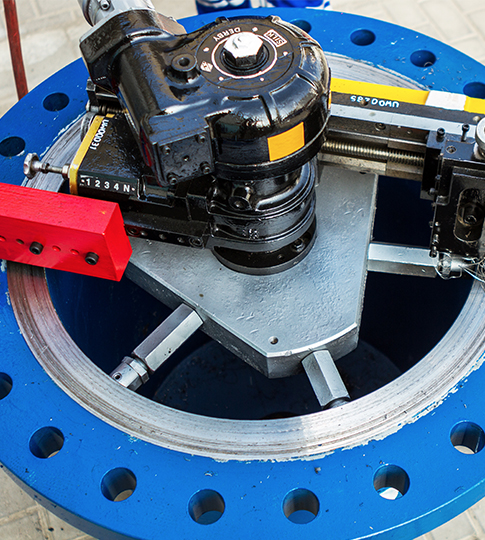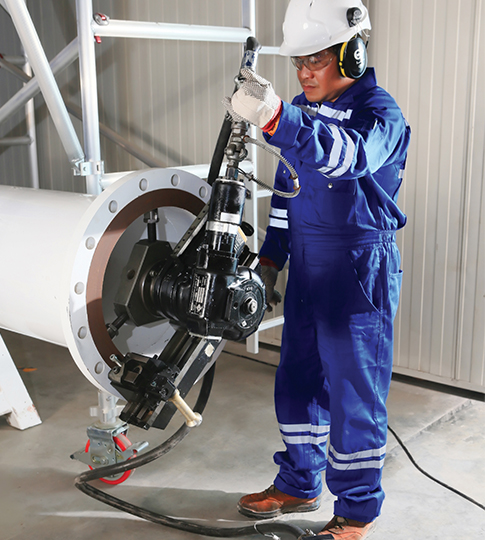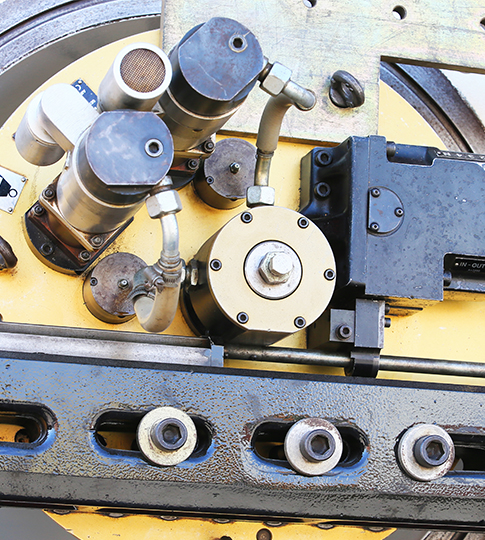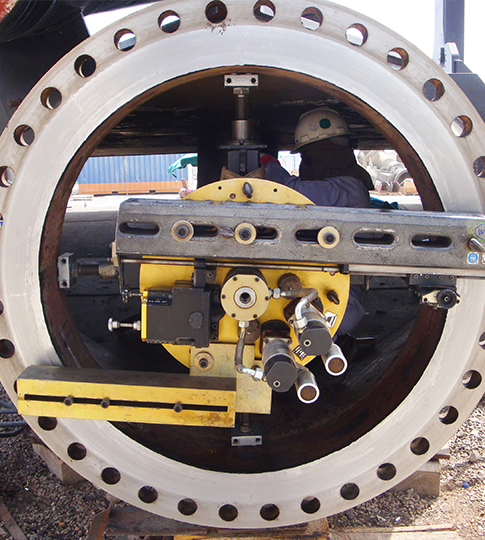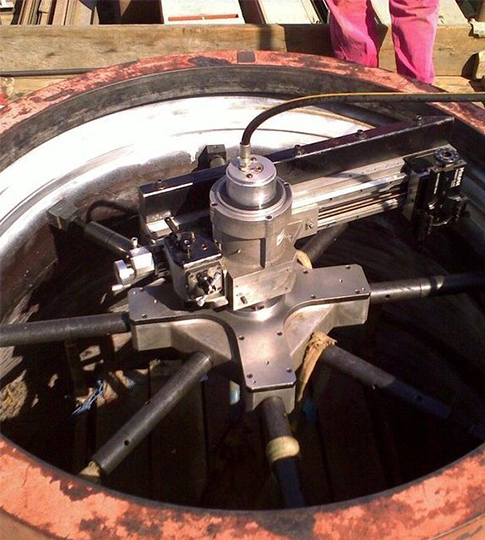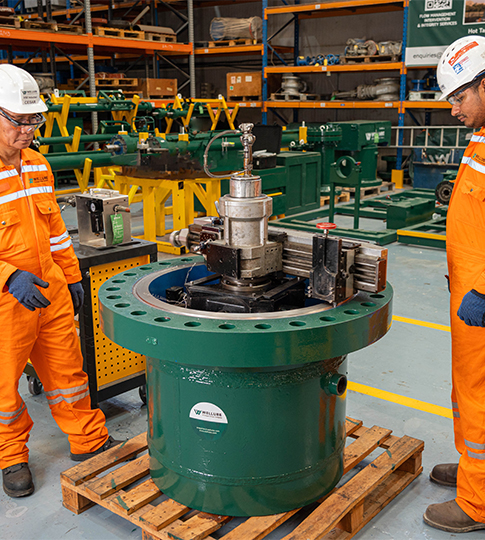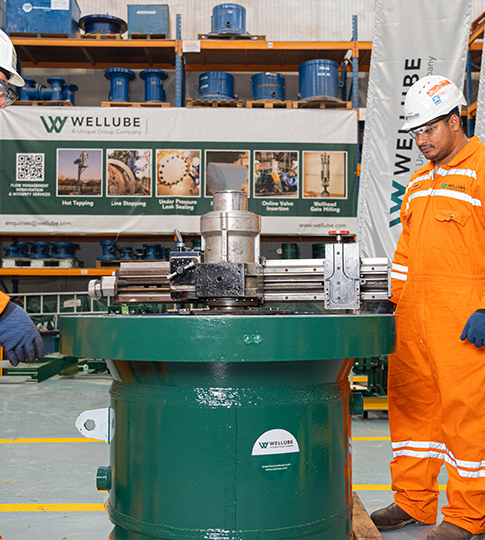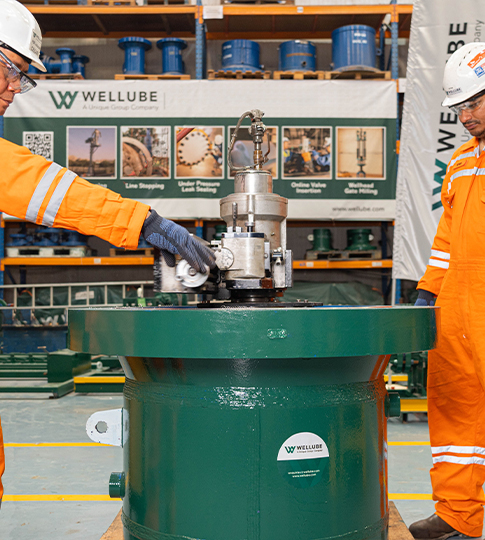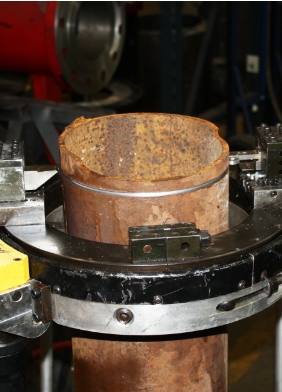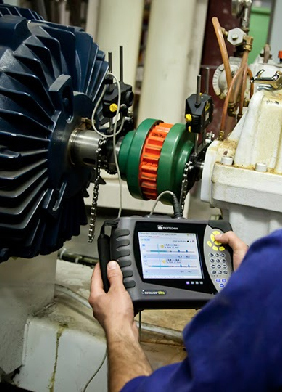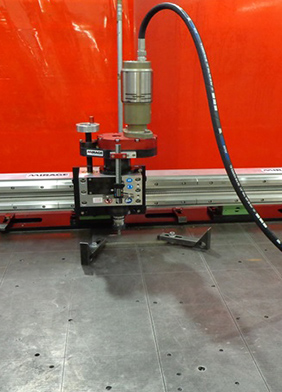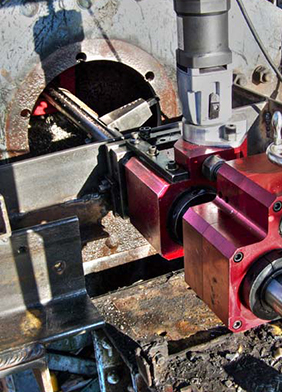Industries We Serve
At Wellube, we understand that flange facing is a critical maintenance procedure across a wide range of industries. Our team is equipped to handle the specific needs of the following sectors:
- Oil & Gas Refineries
- Petrochemical Plants
- Power Generation
- Gas Distribution
- Water and Wastewater Treatment
- Pharmaceutical and Biotech
- Food and Beverage
- Marine and Shipbuilding
- HVAC (Heating, Ventilation, and Air Conditioning)
- Chemical Processing
No matter your industry, if you rely on pipelines to keep your operations running, Wellube is your trusted partner for expert and efficient flange facing services.
What is Flange Facing, and Why is it Important for Your Industrial Operations?
Flange facing is a specialized machining technique that restores the flat, smooth surface of a flange – the bolted connection point between pipe sections. Over time, these surfaces can become uneven due to wear, corrosion, or mechanical impact. Even minor imperfections can compromise the effectiveness of the gasket, leading to costly leaks.
Here’s why flange facing is crucial for your industrial operations:
- Leak Prevention: A perfectly flat flange surface ensures a secure seal with the gasket, preventing leaks that can cause significant financial losses due to product contamination or environmental damage
- Improved Efficiency: Regular flange facing ensures a tight seal, maximizing uptime and optimizing your production processes.
- Extended Equipment Lifespan: Flange facing helps maintain the integrity of your equipment, extending its lifespan and reducing replacement costs.
- Enhanced Safety: Leaks in high-pressure systems can be extremely dangerous. Flange facing minimizes the risk of leaks, promoting a safer work environment for your workforce.
Wellube’s onsite flange facing services are specifically designed to address these concerns.
When is Flange Facing Necessary?
Flange facing isn’t just about fixing existing problems – it’s also a proactive approach to maintaining pipeline integrity. Here are some red flags that indicate your flanges might benefit from onsite flange facing by Wellube’s experts:
- Visible Damage: Flange surfaces are prone to wear, corrosion, and even impact damage over time. These imperfections can prevent gaskets from forming a proper seal, leading to leaks. Flange facing removes these imperfections, ensuring a smooth, flat surface for optimal gasket contact.
- Scheduled Maintenance: Regular flange facing, even in the absence of visible damage, is a proactive approach to ensure long-term system reliability. It’s a preventative measure to minimize the risk of unexpected leaks and costly downtime.
- Performance Issues: Flange facing restores a perfect seal, maximizing system efficiency and product integrity.
- New Gasket Installation: Even when flanges appear undamaged, a fresh gasket installation or replacement often necessitates flange facing. This ensures the new gasket has a clean, smooth surface to adhere to, maximizing its sealing effectiveness.
- Misaligned Flanges: Misaligned flanges due to settling or improper installation can compromise the integrity of the seal. Flange facing allows for precise machining to realign the flange surfaces and restore proper sealing capabilities.
- Safety and Compliance: In critical systems where leaks pose a severe safety risk, or where regulatory compliance is paramount, regular flange facing becomes an essential preventative measure.
Don’t wait for leaks to become a problem. Wellube’s prompt and reliable onsite flange facing service can identify potential issues early on, preventing costly downtime and ensuring the safe and efficient operation of your pipelines.
Our Flange Facing Process
At Wellube, our flange facing process is designed to ensure your pipeline systems meet the highest standards of safety and efficiency. Here’s how we do it:
- Technical Site Visit: Our technicians assess the flange surfaces to identify damage or wear.
- Preparation: The surrounding area is then prepared to ensure a safe environment for the machining process.
- Site Mobilisation: We use portable machining equipment to remove a minimal layer of material from the flange faces, restoring flatness, smoothness, and finish for a secure seal.
- Flange Facing: Depending on the flange type and needs, the process may involve facing, turning, milling, or grinding to achieve the best results.
- Quality Inspection: After machining, we inspect the flange to ensure it meets industry standards (ASME, ANSI, ISO) for flatness, smoothness, and accuracy. Sometimes, we conduct pressure or leak tests to confirm the flange joint’s integrity after machining.
- Complete Traceability: We keep detailed records of the service, including inspection reports, machining details, and test results for quality control and compliance.
This streamlined approach ensures your flanges are precisely resurfaced, minimizing downtime and maximizing the efficiency and safety of your operations.



